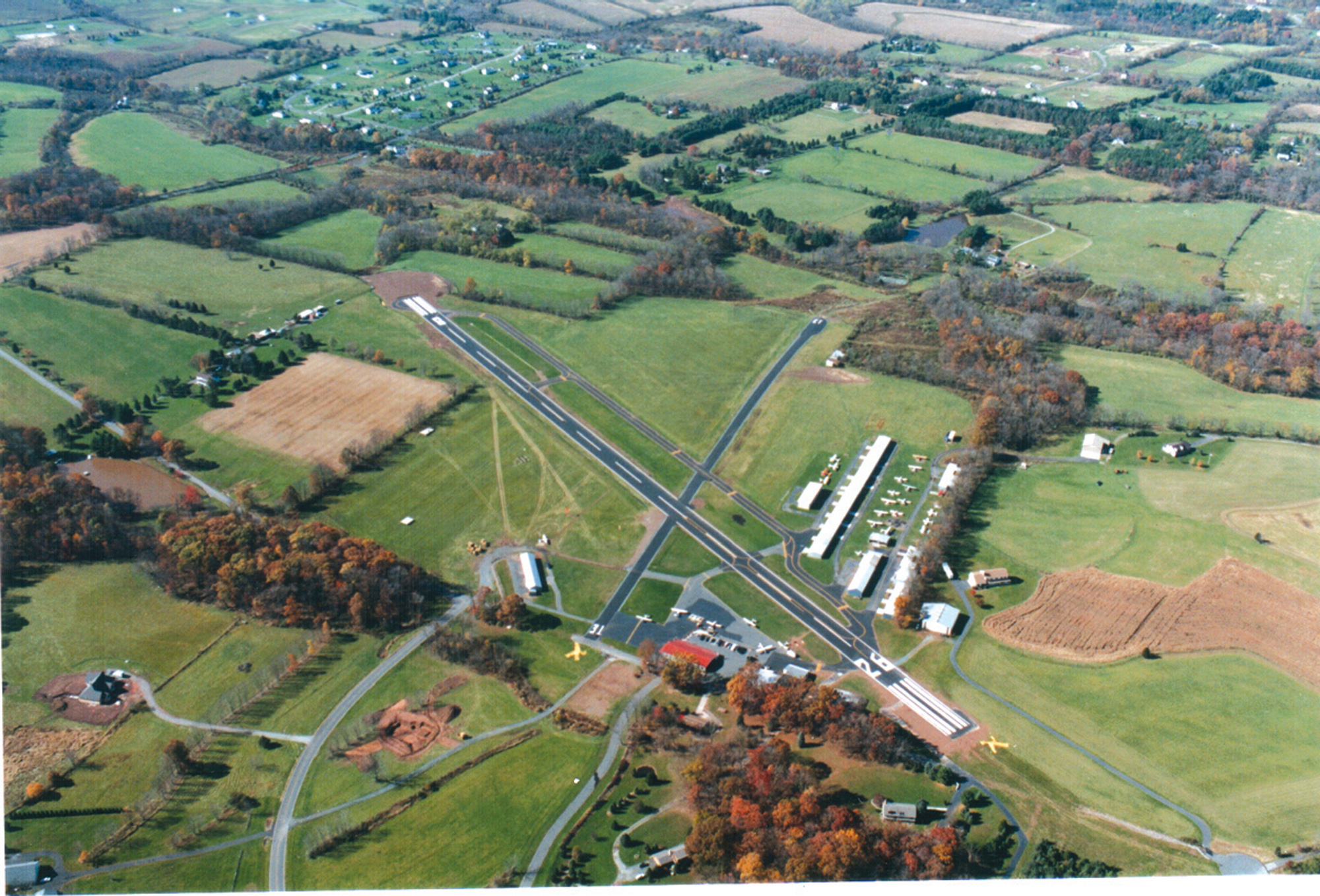By Henry M. Holden

Alexandria Field is in a pastoral setting in northwestern New Jersey. In the lower portion of the photo, four of the 11 homes in the airpark are visible.
In the past three decades, our nation has lost about 25 percent of its GA airports to housing and industrial development, operating restrictions or expensive technology upgrades. New Jersey has gone from more than 100 to 47 GA airports. The remaining airports are struggling to find new ways to continue to exist. One airport that has successfully resisted the scourge of politicians and the lure of the land developer, and is finding new ways to create customers is Alexandria Field, in Hunterdon County in Northwestern New Jersey.
In 1945, William Fritsche, a flight instructor fresh out of the Army Air Corps, and his wife Leah decided to build an airport on his family’s farm. They bought 170 acres of a dairy farm that had been in the family since the mid 1800s. His passion would become N85—Alexandria Field.
Between 1945 and 1952, Fritsche spent his time building his business by giving flight instruction, beginning first with a PT-19 flying off of the single runway, 31-13, a 1,700-foot by 400-foot grass strip with a white gravel line down the middle. The GI Bill was popular at the time, and the airport’s flight school flourished. Eventually, Fritsche built a second runway, 26-08, removing fences and hedgerows at both ends to make the useable length 1,850 feet.
“My dad sold 12 Holstein cows and used the money for the runway,” said Bill Fritsche Jr. “Later, we sold off a piece of the farm, and used the money to pave the runway. This was before there were state funds available.”
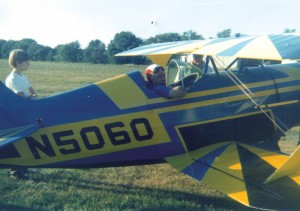
A three-time mayor of his town, Bill Fritsche Sr., shown in a Pitts Special built by two of his friends, established Alexandria Field as a benefit to the whole community.
Charter and air-taxi flights became a popular part of the airport’s service, and Alexandria Field developed a reputation as a reliable source of air transportation. Anything and anybody who had to get someplace fast, from film and turkeys to vacationing families, called Fritsche. As soon as his children were old enough, their father got them involved in aviation.
“Ever since I was a kid, I was involved with my dad and the airport,” said Fritsche Jr.
Bill Fritsche Sr. is gone now, but his son and daughter, Linda Fritsche Castner, still own and run Alexandria Field. In the mid-1980s, a serious temptation loomed over Alexandria Field. The Fritsche family was offered $2 million for their property. The developer planned to put up 70 homes.
“Although it was a big temptation, we wanted to keep the airport so we declined the offer,” said the founder’s son.
If they aren’t made a tempting offer by a land developer, many FBOs often wait until there’s political or legislative pressure to close them before they become involved in saving their livelihood. The Fritsches took a different approach.
“My father was mayor of Alexandria Township for three terms, a total of 10 years,” said Castner. “He was the mayor when he died. My brother finished out my father’s term, and now he’s on the planning board for Alexandria Township, and has been for many years.”
Castner said that, obviously, “being involved in what is going on in your township has value to anyone who owns land, or a small business, regardless of whether the business is an airport, a gas station, or a farm.”
“Being a good neighbor means growing with the community, and letting those who are just moving into a community know the airport has been here for many years and holds a value to the community,” she said.
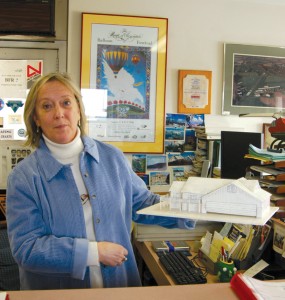
Linda Fritsche Castner displays a mock-up of one of up to five flex-space buildings that could be constructed on the field. She believes that pilots who use their airplanes for business will find the combination hangar and office space convenient.
She believes the key to their success is that it was never motivated by profit alone.
“This is something that was in the family,” she said. “We do it because we want to continue the legacy my dad left us, and we like the flying.”
Bill Fritsche says the like to think they “grow pilots.”
“We teach them to fly, and then we encourage them to rent, or buy an airplane,” he said. “They’ll only buy an airplane if they know they can store it inside, so we try and keep the hangar space reasonable. We also encourage clubs for those who don’t want to be owners. We try to keep it affordable for them and us. That was something my dad always did. He came from a humble background and instilled that in us.”
Castner says that although they’re a corporation, she feels they’re an “entrepreneurship.”
“I came into this business late, and that was my sense,” she said. “Nobody here wants to get a salary and sit with the golden handcuffs waiting for a pension. Everybody here wants to be creative and come up with something and say, ‘I hatched this idea.'”
Castner taught high school, then taught at Bryn Mawr College, and worked for Johnson & Johnson for six years.
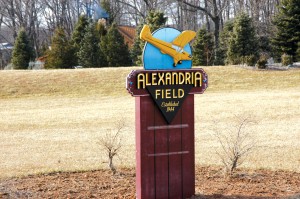
Alexandria Field was built in 1944 and incorporated in 1945. Over the years, Bill Fritsche and his family made many improvements to what was once farmland.
“I came on in 1989, the first year of The Magic of Alexandria Balloon Festival, although I didn’t run it that year,” she said. “The following year I took it over, and for the next three years we made almost nothing. I tried to do everything. I worked on it 365 days a year. We had some rough times, and I was getting sick over it. It ultimately required every family person to chip in and help. That balloon festival bit into me, and I decided that, by gosh, I was going to make it work, and I did.”
She said that in the last three years of the festival, 60,000 people attended annually.
“After ten years we decided to take the once-a-year balloon festival and do something instead that would yield income 365 days a year,” she said.
She said that’s when her brother came up with the idea for an airpark.
“As an airline pilot, he had seen airparks cropping up around the country,” she said. “He thought that if we moved a road we could build one.”
There are 11 homes in the park presently.
“If we had stayed with the balloon festival, we would’ve made money but the airport wouldn’t have grown,” she said. “Half the field where we had parking for the festival is now part of the airpark.”
Bill Fritsche joined TWA as a pilot in 1967, and later went to American Airlines.
“I built seniority so I could juggle my time and spend my off time here,” said Fritsche, who retired from American Airlines in 2003.
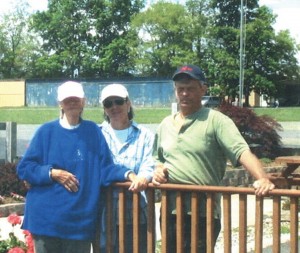
Leah Everett Fritsche (left), with two of her children, Linda and Bill. Mrs. Fritsche has two other daughters, neither of whom is involved in aviation.
“I was earning a good salary, so we plowed the airport revenue back into the airport to upgrade things like the runways and the hangars,” he said.
Eventually Fritsche closed the air-taxi business because it got too complicated.
“I was doing a lot of international flying,” he said. “And although TWA had given me a waiver, keeping track of the duty time became an issue, so we shut it down. You have to be on the lookout for bargains or how to save money in this business. My father and I had taken down the old hangars at the Montgomeryville airport, in Pennsylvania, and trucked them over here. It took us two years, but they only cost us $12,000.”
They still needed hangar doors, and were lucky to find some in an ad in Trade-a-Plane.
“It turns out that this fellow bought the wrong size doors, so I bought them and put them up myself,” he said. “We saved about $1,500 a door.”
The success of the Fritsches and Alexandria Field is based on their family involvement. Only the flight instructors are employees. They average five to seven instructors, depending on the season.
“We’ve had the same mechanic for more than 30 years,” Castner said. “He’s pretty much like family, but he operates the shop independently. We always gave our mechanic an equal ownership in the airplanes. That gave him an incentive and a vested interest to have the planes well-maintained and available for flight always.”
The Fritsches have about 80 to 100 students at any one time, out of which, about 12 to 16 a year get their private licenses. Other flight schools closer to New York City also put through about the same number.

Bill Fritsche overlooks the beginning of construction on the first of the flex-space buildings. The FBO is in the background.
“Some of the larger schools are probably putting through about four times that number,” said Fritsche. “The national average is about 10 percent, so we’re pretty close to that average.”
Castner, who is a CFI, handles the books.
“From a profit-loss point of view, 12 to 16 is a good number for us,” she said. “I think the success of an FBO is how many hours the fleet flies. Between 2,000 to 2,500 hours a year is a comfortable number for us. If it goes much above that, we’re exhausted, and our mechanic isn’t happy, because he’s doing the 100-hour inspections every week or so.”
Castner said she believes that FBOs have to look beyond fuel sales, flight instruction and hangar storage to stay in business.
“I think that looking beyond the ordinary is going to save smaller airports,” she said.
And that is what she and her brother are doing.
“I’d like to make creative new uses of the airport, the gift my dad left us,” she said. “This airport has two runways. That’s unusual. We have a nice airpark next to it, and a farm. I want to go to a level that will make us more valuable to the community. I’d like to create cool new buildings out here for workshops, and an educational hub that extends beyond creating airline pilots or mechanics. People who aren’t happy living near an airport will see more value in it because their kids went to our aviation camp, or their husband went to a workshop here.”
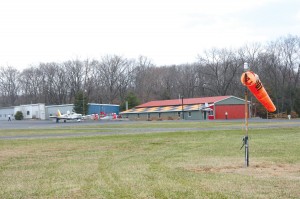
With the introduction of the flex-space buildings, this modest FBO will no doubt grow. The buildings will draw new customers, who in turn will purchase products locally and become an asset to the community.
The Fritsches have two projects they’re working on now, flex-space buildings and an educational center.
“The flex space is for someone with a business who owns an airplane,” Castner said. “The educational center features our Leaders Take Flight workshop (see April 2006 Airport Journals), Women Take Flight workshop, and Cleared for Takeoff, our summer aviation camp for kids. We have one customer who owns a pharmaceutical company. He has office space here where he coordinates with doctors and other medical personnel, and then hops in his plane to visit them and deliver his product. It’s convenient for him, gives us more income and benefits the community.”
Bill Fritsche believes there are plenty of businesses that don’t need the exposure of I-78, an interstate five miles from the airport.
“We have a much nicer environment,” he said. “It’s quiet and pastoral, and you can look out your window and literally see cows grazing. At the same time, it’s easy to reach and there is activity here. If you’re a pilot and use your plane in your business, you’re in heaven out here.”
Castner said that no one else is doing what they’re doing with the flex space.
“If we can make the flex space and the educational center work, we won’t have to worry about a bigger and better flight school,” she said. “We don’t want to become a jetport, so we’ll probably stay the place for the guy with the antique airplane, and the traveler with the Bonanza or the twin.”
She said that an unusual group of people fly in to Alexandria Field.
“It’s a small community where most people come by, and if I’m doing something like weeding the flower bed, they’ll pick up a shovel and pitch in,” she said. “I’ll ask for some volunteers to be a focus group for a seminar I’m developing, and I’ll get presidents of some of the local corporations to volunteer, and they send their people, too. They all fly out of here and nobody says, ‘I’m too busy.’ They realize that what I’m trying to do is good for aviation.”
Fritsche said that everything goes back to keeping the facility moving forward.
“Everything we do is to draw new customers, which in turn means we keep improving things,” he said. “It’s like a circle of life, growing pilots from one stage to the next stage, and so on, and hopefully, one day they’ll be part of our aviation lobbying group.”











